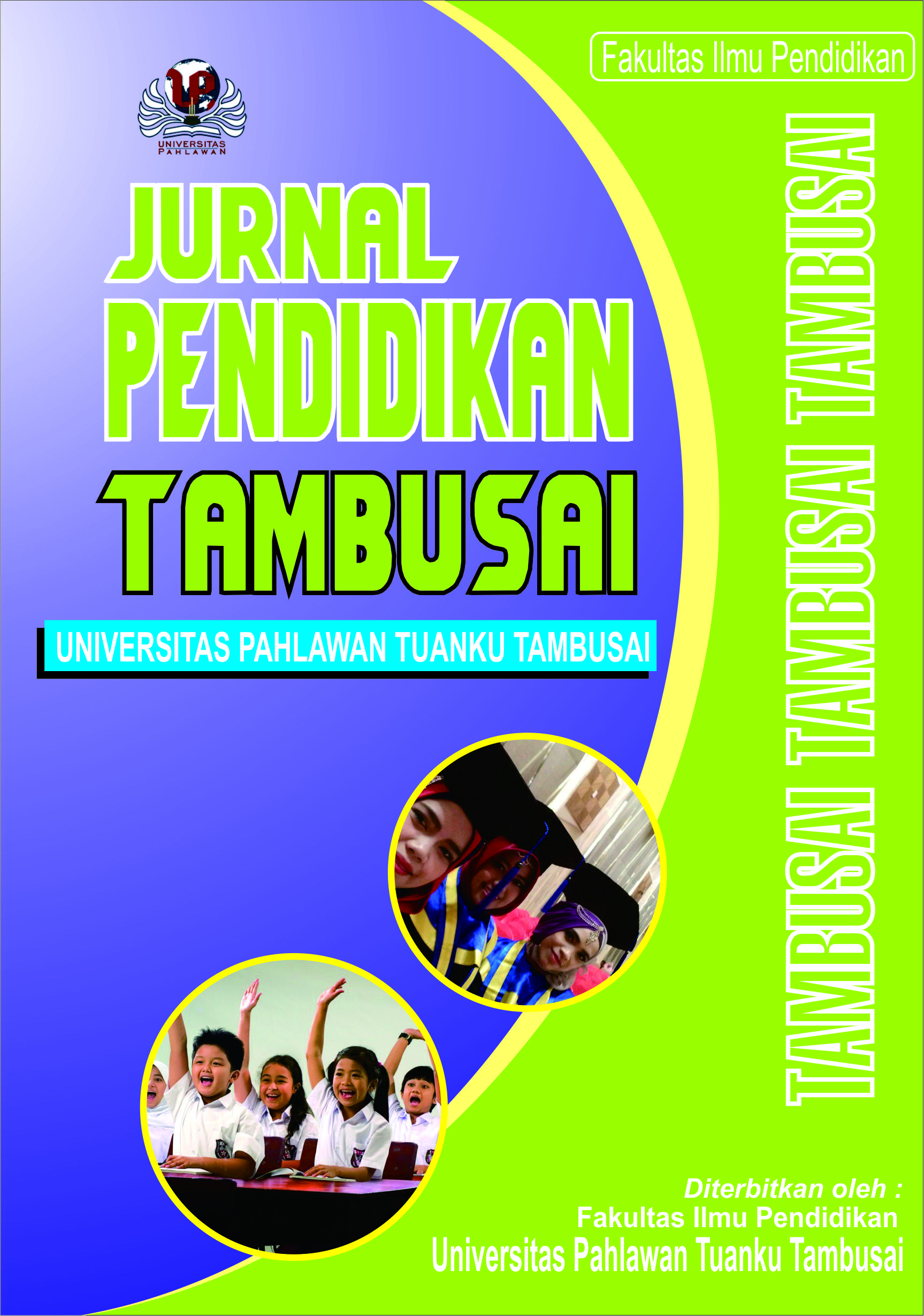The Correlation Between Students’ Self-Efficacy and Their English Speaking Performance at The First Grade of MAN 4 Agam
DOI:
https://doi.org/10.31004/jptam.v7i3.11973Keywords:
Self-Efficacy, Performa Berbicara, DokumentasiAbstract
References
Akhtar, M. (2008). What is Self-Efficacy? Bandura's 4 Sources of Efficacy Beliefs. Positive Psychology.
Alden, L. (1986, December). Self-efficacy and Causal Attributions for Social Feedback. Research in Personality, 20(4).
Arifmiboy, (2015). Statistik Pendidikan, Bukittinggi: IAIN Bukittinggi,
Arikunto, S. (2014). Prosedur Penelitian Suatu Pendekatan Praktik. Jakarta: Rineka Cipta.
Bandura in V. S. Ramachaudran (Ed), A. (1998). Self-Efficacy: Encyclopedia of Human Behavior. New York: Academic Press.
__________(1997). Self-Efficacy: The Exercise of Control. Stanford University.
Brown, H. D., & Abeywicakrama, P. (2004). Language Assessment: Principles and Classroom Practices. Pearson Education.
Creswell, J. W. (2014). Educational Research: Planning, Conducting, and Evaluating Quantitative and Qualitative Research. Pearson Education.
Croasmun, T, J., & Lee, O. (2011). Using Likert-Type Scales in the Social Sciences. Journal of of Adult Education.
Crozier, A. J. (2015). The Role of Past Behavior and Concurrent Self-regulatory Efficacy. American College Health, 168.
D, H. S. (2016). Self-Efficacy Theory in Education, (In Handbook of Motivation at School) (Second Edition ed.).
Darmuki, A. (2017). Evaluating Information Processing Based Learning Cooperative Model on Speaking Skill Course.
Demir, S. (2017). An Evaluation of Oral Language: The Relationship between Listening, Speaking, and Self-Efficcay. Universal Journal of Educational.
Dewi, I. P. (n.d.). Statistika. Perpustakaan Universitas Negeri Padang.
Dosi, R. R. (2000). Ordinary and Extraordinary Self-Confidence: Classic Defenition and Direction. Contempory Educational Psychology.
E, T. (2005). Speaking in a Second Language. London: Lawrence Erlbaum Associates.
F, G. D. (2014). Relationship between Self-Efficacy and English Achievement among Iranian Third Grade High School Students. 6, 461-470.
G, T. D. (2014). Considering the Role of Affect in Learning: Monitoring Students' Self-Efficacy, Sense of Belonging, and Science Identity.
Gay L. R, M. G. (2012). Educational Research: Competencies for Analysis and Applications. New York.
Ghufron, N. &. (2011). Teori-Teori Psikologi.
H, T. N., & N, M. T. (2015). Factors Affecting Students Speaking Perfomance at Le Thanh Hien High School. Asian Journal of Educational Research, 8-23.
Harmer, J. (2007). The Practice of English Language Teaching. Pearson Longman.
Hermagustiana, I., Astuti, A. D., & Sucahyo, D. (2021). Do I Speak Anxiously?A Correlation of Self-Efficacy, Foreign Language Learning Anxiety and Speaking Performance of Indonesian EFL Learners. Journal of Linguistics and English Teaching.
Jaya, H. P., Petrus, I., & Pitaloka, N. L. (2022). Speaking Perfomance and Problems Faced by English Major Students at a University in South Sumatera. Indonesian EFL Journal.
K Lidiawati R, N. S. (2017). Peranan Efikasi Diri dan Intelegensi terhadap Prestasi Belajar pada Mahasiswa di Universitas.
Ladouse. (1991). Whole Brain. Oxford University Press.
Malik, A. (2018). Penantar Statistika Pendidikan. Yogyakarta: Deepublish.
Mills, G. E., & Gay, L. R. (2009). Educational Research: Competencies for Analysis and Applications. Pearson.
Nunan, D. (2003). Practical English Langage Teaching. McGraw-Hill Education.
Oktia, Y. (n.d.). The Corrlation Students' Motivation in Learning and Their English Achievement at the Second Grade of SMK Muhammadiyah Terpa.
Oxford, R. (1990). Language Learning Strategies: What Every Teacher Should Know. Heinli & Heinli.
Puspita Y. R, K. &. (n.d.). Level and Sources of Self-Efficacy in Speaking Skills of Academic Year. Jember University.
Richards, J. C. (2008). Teaching Listening and Speaking: from Theory to Practice. Cambridge University Press.
S, M. (2014). Exploring Factors Affecting EFL Learners Speaking Performance. English Education Department.
Sugiyono. (2015). Metode Penelitian Pendidikan. Bandung: Alfabeta.
Downloads
Published
How to Cite
Issue
Section
Citation Check
License
Copyright (c) 2023 Azizah

This work is licensed under a Creative Commons Attribution-ShareAlike 4.0 International License.
Authors who publish with this journal agree to the following terms:
- Authors retain copyright and grant the journal right of first publication with the work simultaneously licensed under a Creative Commons Attribution License that allows others to share the work with an acknowledgement of the work’s authorship and initial publication in this journal.
- Authors are able to enter into separate, additional contractual arrangements for the non-exclusive distribution of the journal’s published version of the work (e.g., post it to an institutional repository or publish it in a book), with an acknowledgement of its initial publication in this journal.
- Authors are permitted and encouraged to post their work online (e.g., in institutional repositories or on their website) prior to and during the submission process, as it can lead to productive exchanges, as well as earlier and greater citation of published work (See The Effect of Open Access).



